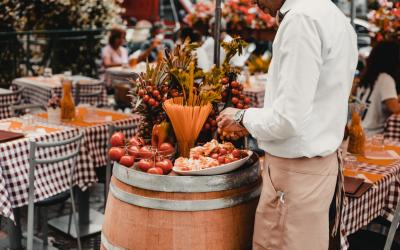Rome's bridges can tell us countless stories; walking partly on the quays and partly on the Tiber banks, the itinerary offers many interesting insights.
First of all, the architecture: from the Fabricius Bridge, more than two thousand years old, which illustrates Roman construction techniques, to the Renaissance Sisto Bridge, and from the Baroque decoration by Bernini for the Sant'Angelo Bridge, to the constructions of the 19th and 20th centuries. And then, following the river, we retrace the vicissitudes of our country and the urban development of the areas through which the Tiber passes: the floods, the raising of the levels, the streets of the Ponte quarter, the centre of financial life and the places of justice in Papal Rome, the now-disappeared port of Ripetta, which testifies to the crucial role played for many centuries by the Tiber as a communication and trade route, the construction of the city walls, the building of new post-unification quarters such as Prati and much more. An itinerary that combines the pleasure of walking along the river with an in-depth study of the architecture and town planning of a part of the city.
The visit is organised by AGTAR-Associazione Guide Turistiche Abilitate Roma (Association of Qualified Tourist Guides Rome), the largest association of guides in Lazio, which proposes a number of specific itineraries for those who want to admire Rome and its surroundings while walking in the open air and at the same time increase their knowledge of the river.
The visits respect the philosophy of the Tiberland DMO: to make known sites of exceptional interest but different from those crowded by mass tourism; to promote open-air itineraries and interaction with the city and the population; to promote responsible and quality tourism, respecting the land and the local economy.
All of this is carried out to the highest quality standards: visits are conducted only by licensed tourist guides, professionals certified by the professional association AGTAR.
The guide adapts explanations and timing to the visitors, to offer an optimal experience, which varies according to age and needs.
Services
-
Visits
Available in Italian, English, French, German, Spanish, Portuguese
Additional Info
- The visit takes place outside: there is no entry to places and monuments with a ticket to pay.
- The prices refer to the fee for the guide.
- Transport, any entrance tickets and reservations, any radio / earphones for groups, any on-site drinks and any other extras are not included.
- Payment - by credit card or bank transfer or cash - will be made directly to the guide.
- The visits begin at a meeting point in the area of the chosen itinerary.
- Type of route: flat, but with several stairs to go up and down from the Lungotevere to the quays.









